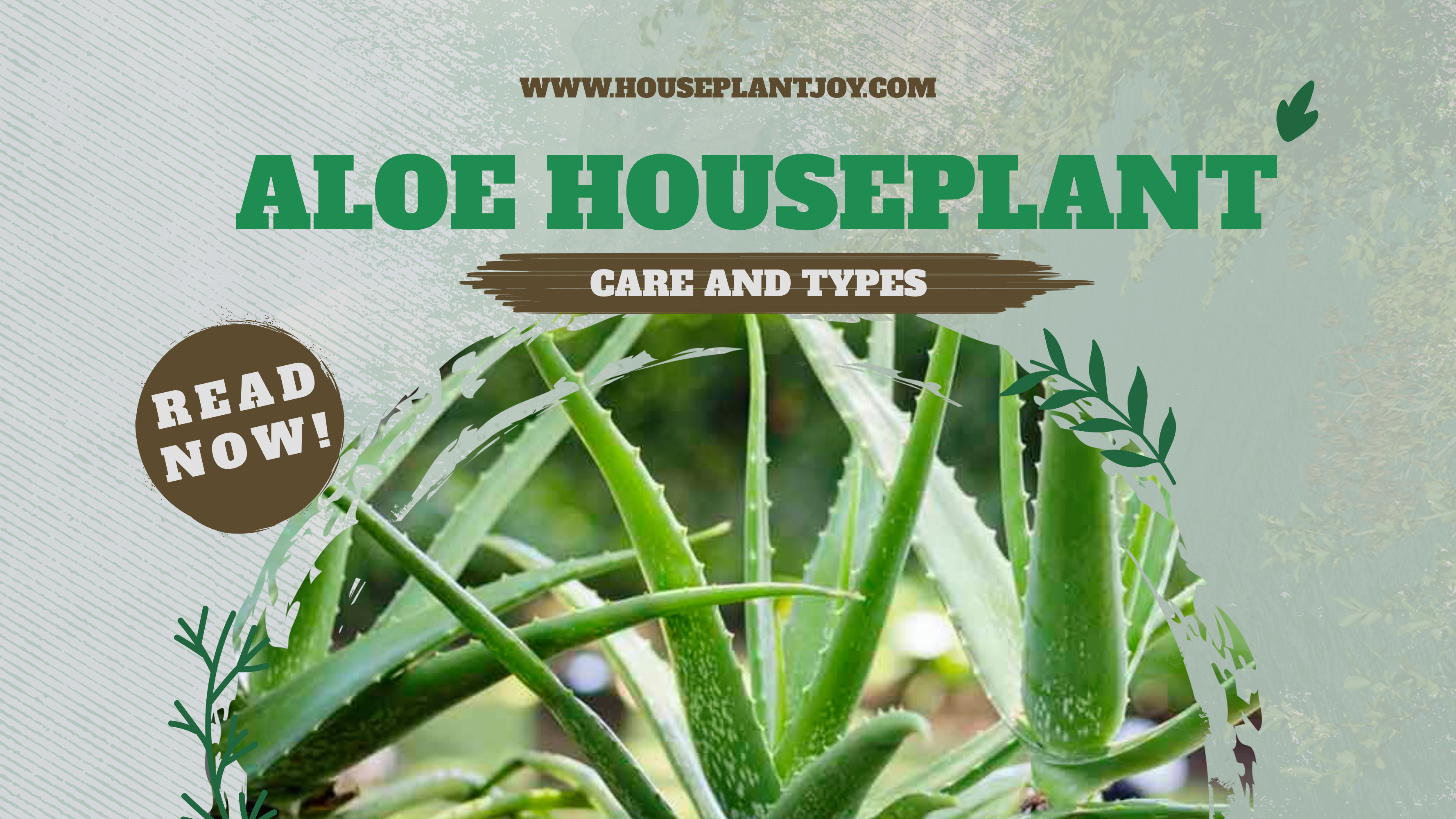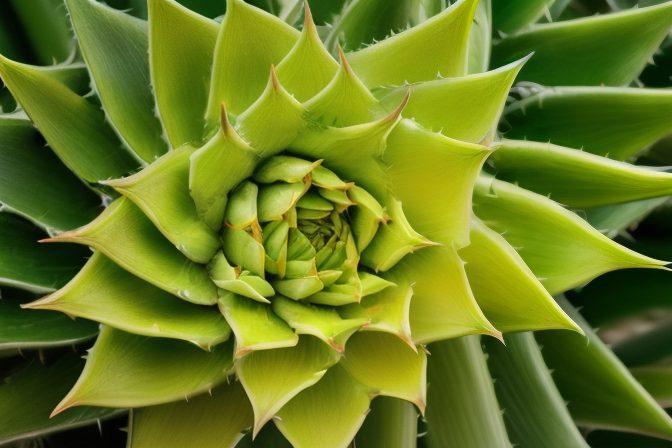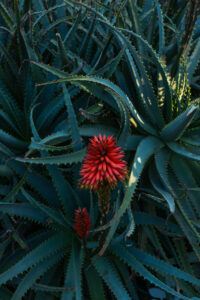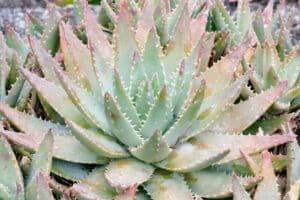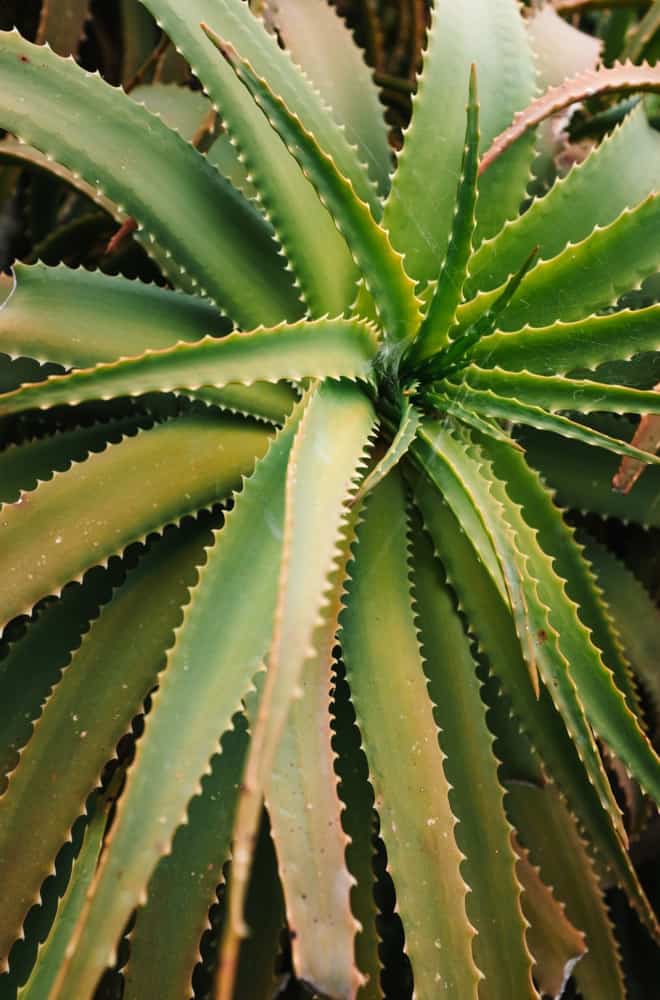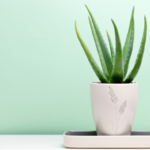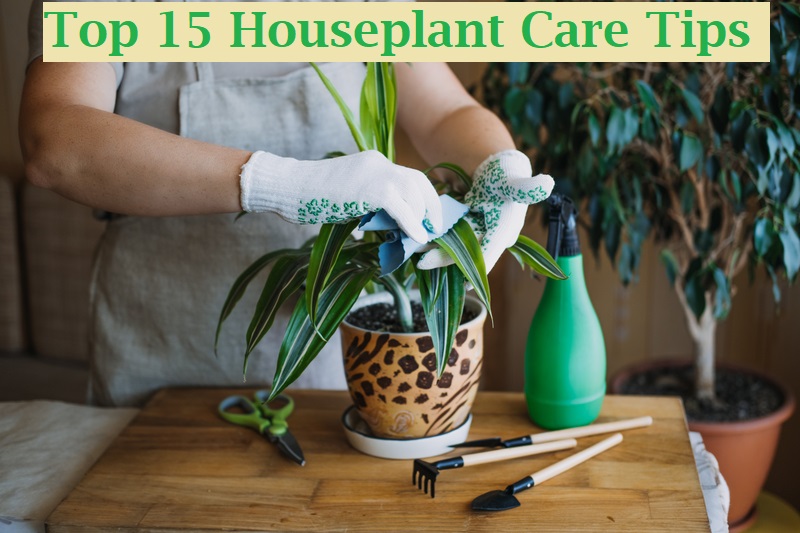HousePlantJoy is supported by our audience. When you purchase through one of our links, we may earn a small affiliate commission. As an Amazon Associate I earn from qualifying purchases. Your cost is not affected.
==================
Meet the aloe plant – a faithful green companion for your home. Aloe plants, often mistaken for humble succulents, pack a potent punch of nutrients and skin-loving goodness in their fleshy leaves. These hardy houseplants are easy to propagate and have a rich history of providing natural remedies, particularly for skin ailments and soothing burns. In this article, we’ll delve into the world of aloe houseplants, discussing care tips and the various captivating types. So, if you’re ready to add some leafy healing magic to your indoor garden, let’s dive in!
Aloe plants, the resilient succulents, are a gift from nature brimming with natural goodness. Their plump leaves hold a treasure trove of nutrients and soothing moisture, making them a go-to for health and healing.
While these botanical wonders don’t typically sprout from seeds, they readily thrive through vegetative propagation. Over the years, aloe plants have been cherished for their therapeutic applications, particularly in the realm of skin care. From treating burns and soothing itching to reducing inflammation, their gel and latex have been trusted remedies.
This article serves as your guide to aloe houseplant care and the diverse types you can cultivate in your home sanctuary. Let’s explore the world of aloe!
Aloe Plant Care and Types
Aloe vera stands in a league of its own, renowned for its extraordinary medicinal properties. But here’s the exciting twist – it’s not the only ace up the aloe plant’s sleeve. There’s a world of other aloe varieties, each with its own unique benefits waiting to be explored. Let’s embark on this aloe adventure, as we introduce you to some captivating types.
Aloe Vera Plant
Let’s dive into the intriguing world of Aloe Vera, the star of the succulent kingdom. Named for its ‘bitter juice in the leaves,’ this plant belongs to the liliaceous family. Its long, spiky-edged leaves house a hidden treasure – a soothing, skin-nourishing sap. Aloe Vera’s reputation as a natural remedy for sunburn and various skin ailments precedes it. Not only is it a medical marvel, but it’s also non-toxic and edible, making it a fantastic addition to your indoor garden. Sip off a leaf with a knife to tap into its healing powers. Use the fresh gel immediately, or keep it in the refrigerator for a cool, calming touch – a true elixir for aloe care.
Lac Aloe Plant
Prepare to be captivated by Lac Aloe, a plant that’s impossible to ignore. With its emerald leaves adorned with white speckles and vibrant red-orange blooms, it’s a showstopper. Lac Aloe thrives in cooler temperatures and thrives in the shade. During winter, its distinctive rounded leaves serve as water scarcity detectors, a fascinating adaptation. Beyond its visual appeal, Lac Aloe’s roots have valuable applications in various medicinal therapies, making it a true botanical wonder.
Golden Toothed Aloe Plant
Meet a plant bursting with personality – the vibrant and energetic Golden Toothed Aloe. Adorned with abundant yellow spikes and rose-tipped leaves, it’s a true botanical character. Growing to a moderate height of about 10 inches, it unveils a striking and radiant hue bound to brighten any space.
Tiger Tooth Aloe Plant
Feast your eyes on the enchanting Tiger Toothed Aloe, a plant with a personality as unique as its name. Its leaves bear toothy lumps that inspired its moniker, yet the spikes, surprisingly, are soft and flexible, adding to its allure rather than its defenses. This delightful Aloe boasts a dense growth, reaching a modest height of about 12 inches, making it a captivating addition to your green oasis.
Video Credit: @gardenanswer
Spiral Aloe Plant
Prepare to be fascinated by the enigmatic Spiral Aloe, a true botanical wonder. Its symmetrical leaves unfurl in an exquisite circle of growth, creating a mesmerizing spiral pattern when the plant reaches a size of 8 to 12 inches. A striking, single rosette emerges as it matures, featuring white to pale green spines along the leaf edges.
Upon reaching full maturity, this intriguing plant can attain a height of up to a foot and sprawl across an impressive two feet. It’s an ideal choice for a sunroom or spacious area, as it can outgrow smaller rooms. While it’s not known for frequent blooming, occasionally, older plants surprise us with spring or summer flowers, adding to their mystique.
Lace Aloe Plant
Lace Aloe, an aloe variety that stands out in both appearance and growth compared to its peers.
This distinctive aloe variety is truly a botanical gem.
Key Characteristics:
- Thrives in partial sun to partial shade
- Requires the typical water needs for a succulent
- Grows up to 8 inches (20 cm) in height
- Spreads out to a width of 6 inches (15 cm)
- Cold-hardy to 0°F (Zone 8a, with a minimum of 10°F or -12.2°C)
- Propagates easily through offsets
- Generally non-toxic to humans and animals
- Shows active growth during the winter season
Mountain Aloe Plant
The majestic Mountain Aloe is a botanical giant best suited for outdoor cultivation in frost-free climates. This remarkable plant presents a trunk-like stem enveloped by intricate growth patterns, creating a visual masterpiece in your garden. For those with a penchant for grandeur, some opt to showcase these magnificent aloes in a spacious sunroom, which becomes a captivating focal display.
Short Leafed Aloe Plant
Adding a touch of charm to your garden, these rounded perennials are a delightful sight, especially when you plant a cluster of them together. Their leaves start off a soothing pale blue but transform into a stunning palette of rose-pink and golden-yellow when kissed by the sun, creating a moderate spectacle.
The Short-Leafed Aloe is the perfect choice for smaller spaces. With a height of approximately 4 inches, it gracefully adorns tabletops and hanging baskets, without overwhelming the room, making it a truly captivating addition.
Aloe Houseplant Care and Growth
In this section, we’ll unveil the secrets of nurturing your aloe houseplant to perfection. These remarkable plants thrive in bright indirect or artificial light. Watering them deeply is key, but remember not to overdo it. In the winter months, exercise patience and water them every three weeks, or even more sparingly. If you’re aiming for optimal growth and vitality, consider giving your aloe a summer vacation outdoors.
Choose the Perfect Match
Aloe plants come in an array of colors and types, allowing you to pick the one that resonates with your style. Regardless of the variety, the care and growth requirements remain fairly consistent. Among them, the Aloe Vera reigns supreme, boasting a multitude of benefits.
Avoid the Overwatering Trap
One common misstep many aloe enthusiasts make is overwatering. These succulents are built to retain ample moisture, making them remarkably resilient during dry spells. So, resist the temptation to shower them with excess water.
Let the Sunshine In
Aloe plants thrive under the sun’s warm embrace. When the weather permits, place your aloe outside to bask in the sunlight. However, exercise caution when temperatures drop below 40°F, as aloe plants are sensitive to cold and can suffer from soggy conditions or even rot.
Growing Conditions
Aloe plants, hailing from semi-tropical regions, thrive in specific conditions that mirror their natural habitat. Here’s your guide to providing the perfect environment:
- Sunshine and Scarcity: Aloe plants adore full sun and require less frequent watering. To keep them thriving, allow the soil to completely dry out between watering intervals.
- Light Lover: For a thriving aloe, choose a spot where it can bask in the sunlight for 8-10 hours each day.
- Potting Magic: When it comes to potting, either use a suitable mix or create your own blend, incorporating soil, sand, and gravel.
- Planting Pro Tip: When you’re ready to introduce your aloe to its new home, make sure to cover the root ball with soil. After planting, hold off on watering for a few days to allow your plant to settle in comfortably. This is the recipe for a content and healthy aloe plant.
Climate and Soil Requirements for Aloe Houseplant Care
Aloe plants are incredibly adaptable when it comes to climate and soil. Here’s what you need to know:
- Climate Resilience: Aloe plants can thrive in diverse climate conditions. They are at home in low rainfall regions and warm, humid climates. However, they become more sensitive in colder conditions and are susceptible to frost. So, ensure they’re sheltered from harsh cold climates.
- Soil Versatility: Aloe houseplants can flourish in a range of soils, from sandy to light. They perform best in well-draining, light soils. These resilient plants can tolerate soils with a high pH of 8.5 and even saline soils. But be cautious, as they don’t fare well in waterlogged conditions.
Fertilization and Planting
- Fertilizer Selection: Opt for a liquid 10-40 houseplant mix designed for succulents, steering clear of granular fertilizers. If your Aloe resides in a container, give it a thorough drink the day before feeding. Fertilize once a year in spring at the beginning of the growing season.
- Propagation and Planting: To propagate aloe houseplants, use root sucker cuttings. Choose medium-sized root suckers and plant them directly in the ground.
Planting Density, Irrigation, and Harvesting
- Planting Density: When cultivating aloe, you can accommodate around 50,000 to 55,000 plants per hectare, maintaining a spacing of 40-50 cm.
- Irrigation: In dry conditions, provide irrigation at intervals of two weeks. During the rainy season, aloe typically requires less irrigation since it doesn’t absorb much water. The first irrigation should be done right after planting the suckers. Overwatering can harm the crop.
- Harvesting: Aloe plants typically take 18-24 months to fully mature. They bloom with yellow flowers each year and can be harvested up to four times annually. Harvest 3-4 leaves from each plant, as they regenerate, ensuring a sustainable harvest for up to five years.
Yield and Plant Protection
- Yield: From one hectare of land cultivation, you can expect an average yield of 40 to 50 tons of thick aloe leaves.
- Plant Protection: Aloe plants may face various insect and pest issues, so proper care is essential. Maintaining clean cultivation practices and treating suckers before planting are critical. Organic solutions such as garlic juice or neem oil can be used for plant protection.
Common Issues:
The Aloe houseplant thrives when it’s kept on the drier side. Overwatering and unsuitable potting mediums are primary culprits behind most problems. Aloe houseplants can also suffer from issues like excess salts in the soil, diseases, chemical toxicity, and nutrient deficiencies.
Additional Considerations for Aloe Plants
When caring for Aloe plants, it’s crucial to keep a few more points in mind:
- Toxicity Warning: Aloe Vera houseplants can be harmful if ingested by small animals. Ensure they are out of reach of curious pets.
- Pet Precautions: If you have cats or dogs, be extra cautious about the placement of your Aloe plant. Pets may be drawn to its fleshy leaves, so strategic positioning is key.
- Quarantine New Additions: When you bring a new Aloe plant home from the garden center, it’s a good practice to keep it away from your other houseplants for a couple of weeks. This helps ensure it’s disease and pest-free, safeguarding your existing plant family.
- Annual Feeding: To keep your Aloe plant healthy and thriving, consider an annual feeding regimen. In the spring, provide a boost with a 10-40-10 fertilizer, enhancing its vitality and beauty.
Embrace the Healing Magic of Aloe Houseplants
In the world of indoor gardening, aloe houseplants stand out as remarkable green companions, brimming with natural goodness and a rich history of providing remedies for various skin ailments. As we conclude this journey into the world of aloe, let’s recap some key takeaways:
1. Natural Healing: Aloe plants, with their soothing gel and latex, have been trusted for centuries as natural remedies for sunburn, skin irritations, and more. The healing powers of aloe are at your fingertips when you introduce these remarkable plants into your indoor garden.
2. Diverse Types: The aloe kingdom is not limited to Aloe Vera; it offers a captivating array of varieties, each with its unique charm and benefits. From Lac Aloe’s distinctive appearance to the vivacious Golden Toothed Aloe and the enigmatic Spiral Aloe, there’s an aloe type for every plant enthusiast.
3. Care is Key: Proper care, including appropriate lighting, watering, and environmental conditions, is essential for thriving aloe plants. Avoid overwatering, provide sufficient sunlight, and pay attention to climate and soil requirements to ensure your aloe’s health and vitality.
4. Propagation and Maintenance: Understanding the methods of propagation, such as root sucker cuttings, and regular maintenance practices like feeding and protection from pests are essential for your aloe’s success.
5. Additional Considerations: Be mindful of pet precautions and quarantine practices for new additions, and consider annual feeding for aloe plant health.
As you embark on your journey to cultivate aloe houseplants, remember that these resilient succulents have much to offer in terms of both beauty and practicality. By adding them to your indoor garden, you’re inviting the healing magic of aloe into your home.
Now, it’s your turn to dive into the world of aloe and explore the unique varieties that resonate with your style and needs. Whether you’re a seasoned plant enthusiast or a newcomer to the world of indoor gardening, aloe plants offer an enriching and rewarding experience. So, roll up your sleeves, gather your gardening tools, and let the healing magic of aloe enhance your indoor oasis. Your green companions await your care and attention. Happy gardening!
Frequently Asked Questions (FAQs) About Aloe Houseplants
How often should I water my aloe plant?
Aloe plants prefer to dry out between waterings. During the growing season (spring and summer), water every two to three weeks, allowing the soil to dry partially between waterings. In the dormant season (fall and winter), reduce watering frequency to once a month or when the soil is completely dry to the touch. Remember, overwatering is a common issue, so it’s best to err on the side of underwatering.
Can I use any type of soil for my aloe plant, or is there a specific mix I should use?
Aloe plants thrive in well-draining soil. A suitable mix for aloe typically consists of a combination of potting soil, sand, and gravel. Ensure the container has good drainage, and consider adding perlite to the mix for even better drainage. Avoid heavy, water-retentive soils that can lead to root rot.
My aloe plant has grown too large for its pot. When and how should I repot it?
Aloe plants typically need repotting every 2-3 years, especially if they’ve outgrown their current container. Spring is the best time for repotting. Choose a pot that is 2 inches larger in diameter than the current one and has drainage holes. Gently remove the plant, shake off excess soil, and place it in the new pot with fresh potting mix. Water lightly after repotting and avoid exposing it to direct sunlight for a few days to help it recover.
Connect with Houseplant Joy: Your Green Haven Awaits!
? Ready to immerse yourself in the world of houseplants and aloe’s natural wonders? Follow us on our social media accounts for:
? Inspiring visuals on Instagram
? Creative ideas on Pinterest
? Engaging content on Facebook
? Join conversations on Twitter
Discover more about aloe, get product reviews, and connect with a passionate houseplant community. Your green haven is just a click away! ? #HouseplantJoy

